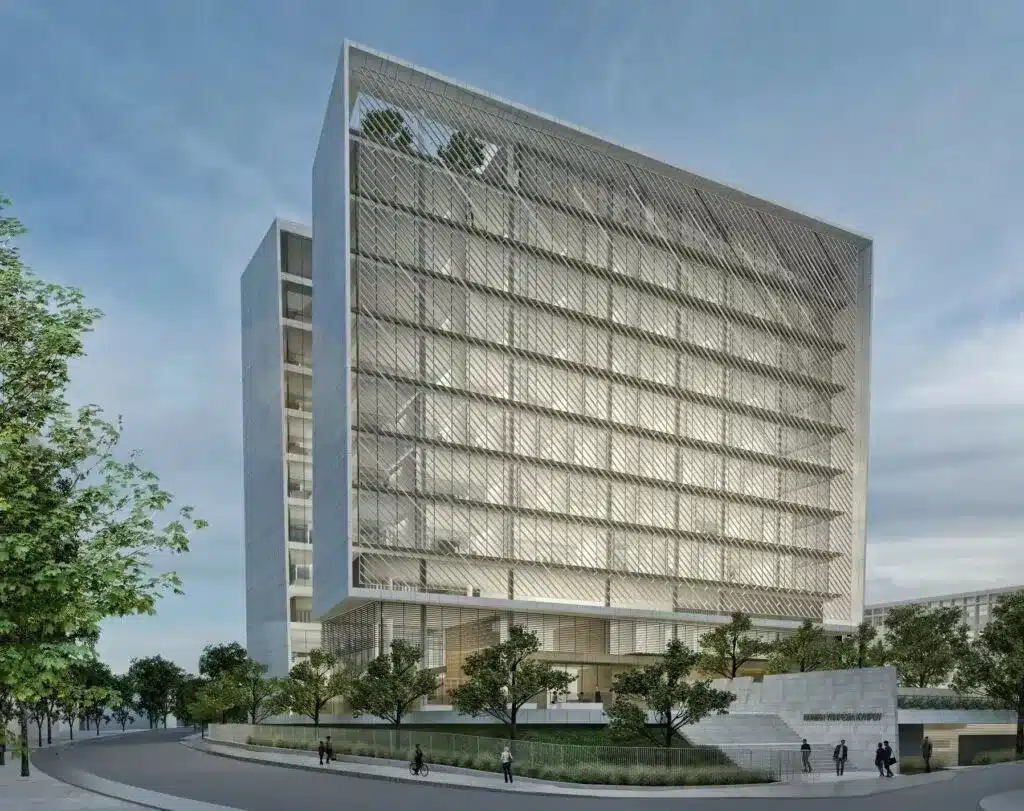The building of the legal service of a state is a point of reference in the capital and must have a high aesthetic image and functionality, the architect Eleni Pattichis, whose office won the first tender to design the building, said in a letter on Wednesday to the auditor-general, who had been opposed to its construction.
Last week, the transport ministry had cancelled tenders for the legal service building and the new interior ministry and transport ministry buildings.
Auditor general Odysseas Michaelides had long been against the plans, reportedly due to the planned opulence of the buildings.
According to the plans, the building would have had 11 above-ground floors and two basement floors.
The attorney general’s office would have had an area of 74 square metres, while his assistant’s office would have been 72 square metres in area. The office also would have had its own bathroom and two separate waiting rooms.
In addition, the building was designed with six lifts, one of which was for the exclusive use of the attorney general and one for the exclusive use of the assistant attorney general.
In her letter on Wednesday, Pattichis stated that she felt it necessary for her to give a statement on the matter, with data specific information.
As she mentions in her letter, the building of the legal service of a state is a point of reference for the capital and must have a high aesthetic image and functionality, to add that this goal necessitates a small increase in the required expenditure within the permitted framework of an architectural competition.
She added: “This logic also governs the construction of buildings, such as the New Archaeological Museum of Cyprus, which received a very different approach, noting that the budget of the New Archaeological Museum of Cyprus (with a building area of 30,000 sq.m.), was €75 million when the competition was launched, but was awarded at €120,938,000 million (excluding VAT).”
According to Pattichis, the building programme of the legal service building was made by the department of public works based on law and the building had an area of 23,300 sq.m. She added that the budget of the building was set by the contracting authority at €45 million. (€54 million with VAT) an amount that includes mobile furniture and 12-year maintenance.
Regarding the area of the building, she said that the difference between the original and the proposed one was 0.08 per cent.
On the number of floors that had been raised as an issue, Pattichis said that there was no problem, as the public works department had coordinated with the building department, and the planning was done based on the law.
She added that during the presentation and evaluation both the buildings department and the municipality of Nicosia had been present and approved the design of her architectural office.
In addition, Pattichis stated that “it goes against all logic for the state bodies to announce barren architectural competitions, leading the researchers and contractors to waste resources, while such an important architectural project for the Republic of Cyprus remains on paper for insignificant reasons.”
She added: “The logic of double standards, which you apply as an audit service in dealing with different building developments and the misleading messages you give to the media about the waste of state resources, causes us indignation and discourages us as architects and citizens to trust the state institutions.”







Click here to change your cookie preferences